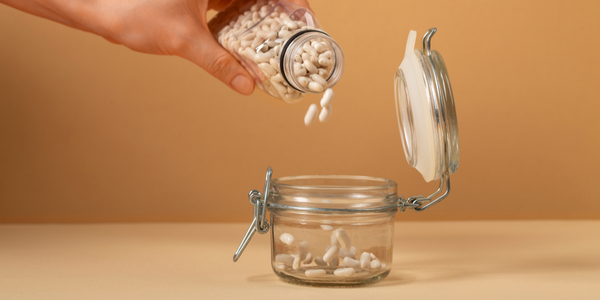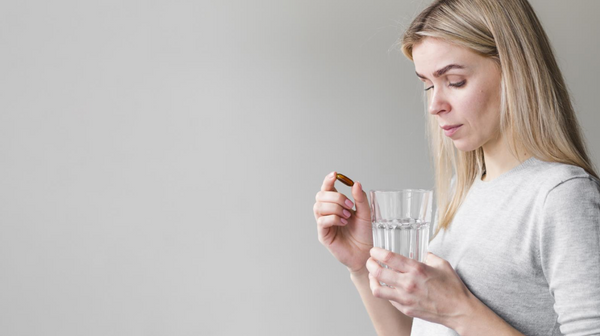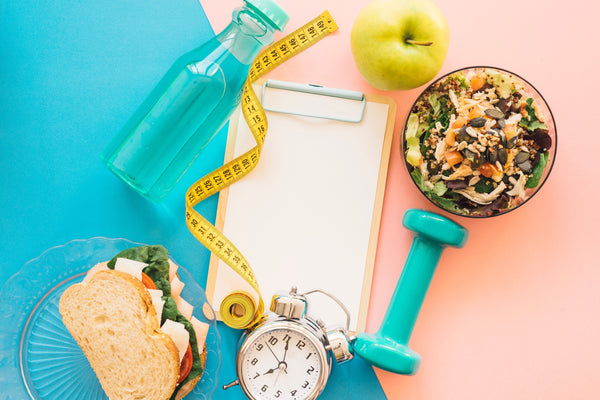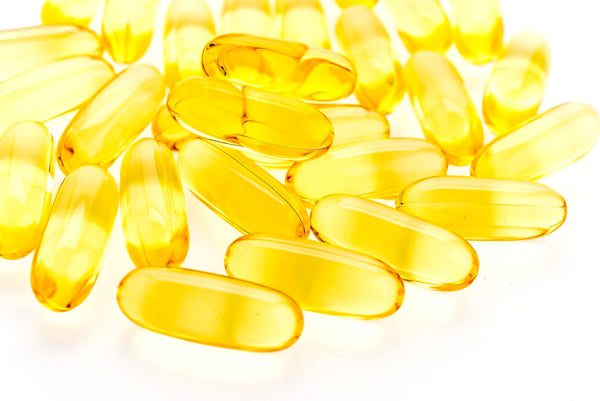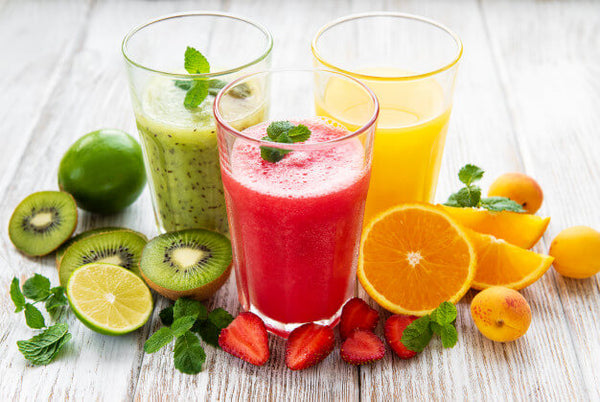How does our body process sugar
Our body receives sugar from two sources:
- Indigenous (internal) production: production of sugar by the liver
- Exogenous (External) Source: Sugar obtained from foods and beverages
Sugar, or glucose, from food is obtained mainly through carbohydrate-rich foods such as bread, rice, pasta, fruits, etc.
Let’s say you eat two slices of bread. With the help of digestive enzymes and acid, this food gets broken down in your gut, releasing sugar molecules into the bloodstream. The pancreas, an organ behind your stomach, senses the food coming into the gut and releases its insulin molecules. Insulin acts as a courier boy that picks up the glucose molecules from the blood and helps them get delivered inside different cells of your body.
What happens in Diabetes
Diabetes occurs when either your pancreas is unable to release insulin(courier boys) in response to glucose, either the amount of insulin released is too low(insufficient production), or the released insulin is unable to carry out its function effectively (ineffective) to transfer all of the glucose from the blood into the cells.
Difference between Type 1 & Type 2 Diabetes
Technically termed diabetes mellitus, diabetes is broadly classified into two categories, Type 1 and Type 2, depending upon their root causes. There are a few more categories of diabetes, such as GDM (Gestational Diabetes Mellitus), prediabetes (Borderline Diabetes), MODY (Maturity-Onset Diabetes of the Young), LADA (Latent Autoimmune Diabetes of the Adults), etc. Both GDM and prediabetes are temporary phases that can be reversed with lifestyle modification. Today’s article will focus on the difference between type 1 and type 2 diabetes.
Type 1 Diabetes
Around 5–10% of people diagnosed with diabetes have Type 1 diabetes. Type 1 diabetes occurs when the beta cells of your pancreas are unable to produce insulin. An autoimmune reaction in the body usually triggers this. The trigger for this reaction is unknown but can be managed by the external administration of insulin. Insulin injections have become mandatory in type 1 diabetes. It is also termed insulin-dependent diabetes or juvenile diabetes.
Symptoms
- Excessive Thirst (Polydipsia)
- Frequent Urination (Polyuria)
- Unexplained Weight Loss
- Fatigue
- Increased Hunger (Polyphagia)
- Blurry Vision
- Irritability
- Frequent Infections
Untreated or newly diagnosed Type 1 diabetics may face some life-threatening symptoms during a diabetes complication (diabetic ketoacidosis) with the following symptoms:
- Deep and rapid breathing
- Fruity breath odor
- Nausea
- Vomiting and confusion.
Note: Seek Immediate medical assistance for the symptoms mentioned above
Causes
Type 1 diabetes is an autoimmune disease in which the immune system mistakenly attacks and destroys insulin-producing beta cells in the pancreas. The exact cause of type 1 diabetes is not well understood. Still, it is believed to result from a combination of risk factors that may increase an individual's likelihood of developing the condition:
- Genetic Predisposition
- Autoimmune Diseases
- Viral Infections
- Early Childhood Exposures
Treatment & Management
-
Insulin Therapy:
Insulin is the primary treatment for type 1 diabetes because the body cannot produce it. Insulin can be administered through injections using syringes, insulin pens, or insulin pumps. Some individuals may use a combination of these methods.
-
Blood Sugar Monitoring:
Regular blood glucose monitoring ensures blood sugar levels are within the target range. Frequent monitoring with CGS systems helps individuals make informed decisions about adjusting their insulin doses, dietary choices, and physical activity.
-
Healthy Eating
A balanced and consistent diet can help stabilize blood sugar levels. Working with a registered dietitian or diabetes educator can be beneficial in creating a personalized meal plan. This may involve managing the intake of carbohydrates, monitoring portion sizes, and paying attention to the glycemic index of foods. Including fiber-rich foods like whole grains, legumes, vegetables, and fruits in your diet can be a helpful strategy for controlling glycemic response and promoting overall health. Fiber can lower the glycemic load of a meal by delaying the absorption of sugar, leading to a more gradual rise in blood glucose levels. Certain superfoods, such as cinnamon and apple cider vinegar, have been proven to manage blood sugar levels by improving insulin sensitivity and reducing insulin resistance.
-
Carbohydrate Counting:
People with Type 1 diabetes often use carbohydrate counting to help match their insulin doses to the amount of carbohydrates they consume. This approach allows for more precise control of blood sugar levels, especially when eating meals. People with Type 1 diabetes often use carbohydrate counting to help match their insulin doses to the amount of carbohydrates they consume. This approach allows for more precise control of blood sugar levels, especially when eating meals.
-
Regular Exercise:
Physical activity can help improve insulin sensitivity and blood sugar control. Monitor blood sugar levels before, during, and after exercise to adjust insulin and carbohydrate intake as necessary.
-
Education and Supplementary Support:
Diabetes self-management education and support (DSMES) programs are available to help individuals learn about diabetes management, including blood sugar monitoring, insulin administration, and lifestyle choices. You may also take fiber supplements or daily green tablets if your diet lacks sufficient fiber. These supplements come in handy for people who travel frequently, do not have access, or are unable to ensure adequate fiber daily.
-
Hypoglycemia Management:
Learn to recognize and manage episodes of low blood sugar (hypoglycemia) by carrying fast-acting sources of glucose, like glucose tablets or gel, to raise blood sugar levels when needed.
-
Regular Checkups:
Regular visits to your healthcare provider are essential for monitoring your overall health, assessing your diabetes management, and adjusting your treatment plan as necessary.
-
Education and Support:
Learning about diabetes management, including how to administer insulin, count carbohydrates, and handle day-to-day challenges, is essential. Diabetes education programs and support groups can provide valuable information and emotional support.
-
Diabetes Technology:
Advancements in diabetes technology, such as insulin pumps, continuous glucose monitors (CGMs), and closed-loop systems (artificial pancreas), can provide more precise and automated blood sugar management.
Type 2 Diabetes
Type 2 diabetes is a chronic metabolic disorder characterized by the body's inability to utilize insulin or produce sufficient amounts of it effectively. This results in elevated blood sugar levels, leading to various health complications. Lifestyle factors, genetics, and obesity often contribute to its development, making it a common form of diabetes.
Symptoms
- Frequent Urination(Polyuria)
- Excessive Thirst (Polydipsia)
- Unexplained Weight Loss
- Fatigue
- Blurred Vision
- Slow Wound Healing
- Increased Hunger (Polyphagia)
- Tingling or Numbness
- Recurrent Infections
- Irritability
Causes
Insulin Resistance: A key factor in Type 2 diabetes is insulin resistance, where the body's cells do not respond well to insulin (Insulin Resistance), leading to elevated blood sugar levels. The rest of the factors that contribute are:
- Genetics
- Obesity
- Physical Inactivity
- Poor Diet
- History of Gestational Diabetes
- Stress
Treatment & Management
-
Diet
Adopt a balanced, low-sugar, and low-carbohydrate diet. Focus on whole foods, including fruits, vegetables, lean proteins, and whole grains. Monitor carbohydrate intake and consider working with a registered dietitian. Ensure adequate dietary fiber intake. Fiber-rich foods have a lower glycemic index (GI), which measures how quickly a food raises blood sugar. Consuming a meal high in fiber can help mitigate the post-meal blood sugar spike by slowing down the digestion and absorption of carbohydrates. Whole grains, whole fruits, legumes, and green vegetables are great sources of dietary fiber.
-
Physical Activity
Engage in regular exercise to improve insulin sensitivity.
-
Weight Management
Achieving and maintaining a healthy weight helps improve insulin sensitivity, thereby combating insulin resistance.
-
Oral Medications
Several classes of oral medications, a.k.a. OHA (oral hypoglycemic agents), help lower blood sugar levels, improve insulin sensitivity, or stimulate the pancreas to release more insulin, such as metformin, sulfonylureas, etc.
-
Insulin Therapy
In some cases, people with type 2 diabetes may require insulin therapy, especially if blood sugar levels cannot be adequately controlled with oral medications or if there's a significant insulin deficiency.
-
Regular monitoring and check-ups
Check blood sugar levels regularly to track progress and adjust treatment as necessary. Ensure diabetes care, including monitoring for complications and adjusting the treatment plan as needed.
-
Foot, Kidney, and Eye Exams
Long-standing diabetes or excessively high blood sugars can damage blood vessels and impact the organs (kidney, brain, heart, eye, and feet) that supply the blood. Regularly check and care for your feet to prevent diabetic neuropathy and ulcers. Also, undergo eye and kidney testing to detect and manage diabetic retinopathy or nephropathy.
-
Education and Supplementary Support
Participate in diabetes education and self-management programs to learn about the condition, self-monitoring, and lifestyle changes. You may also opt to buy apple cider vinegar online. Organic apple cider vinegar is readily available with additional ingredients in the supplement market that can make your diabetes management an easy process because it improves insulin sensitivity.
Wrapping Up
To summarize our learning about type1 diabetes vs type 2:
Type 1 and Type 2 diabetes are distinct conditions. Type 1 is an autoimmune disorder where the pancreas doesn't produce insulin. Type 2 results from insulin resistance and inadequate insulin production, often due to lifestyle factors. Type 1 usually occurs in youth, while Type 2 is more common in adults and is often related to obesity and genetics. Management approaches differ, with Type 1 requiring insulin therapy, while Type 2 may involve lifestyle changes, oral medications, and, in some cases, insulin. Understanding these differences is essential for accurate diagnosis and effective treatment.
References
https://www.cdc.gov/diabetes/basics/diabetes.html
https://www.niddk.nih.gov/health-information/diabetes/overview/symptoms-causes













